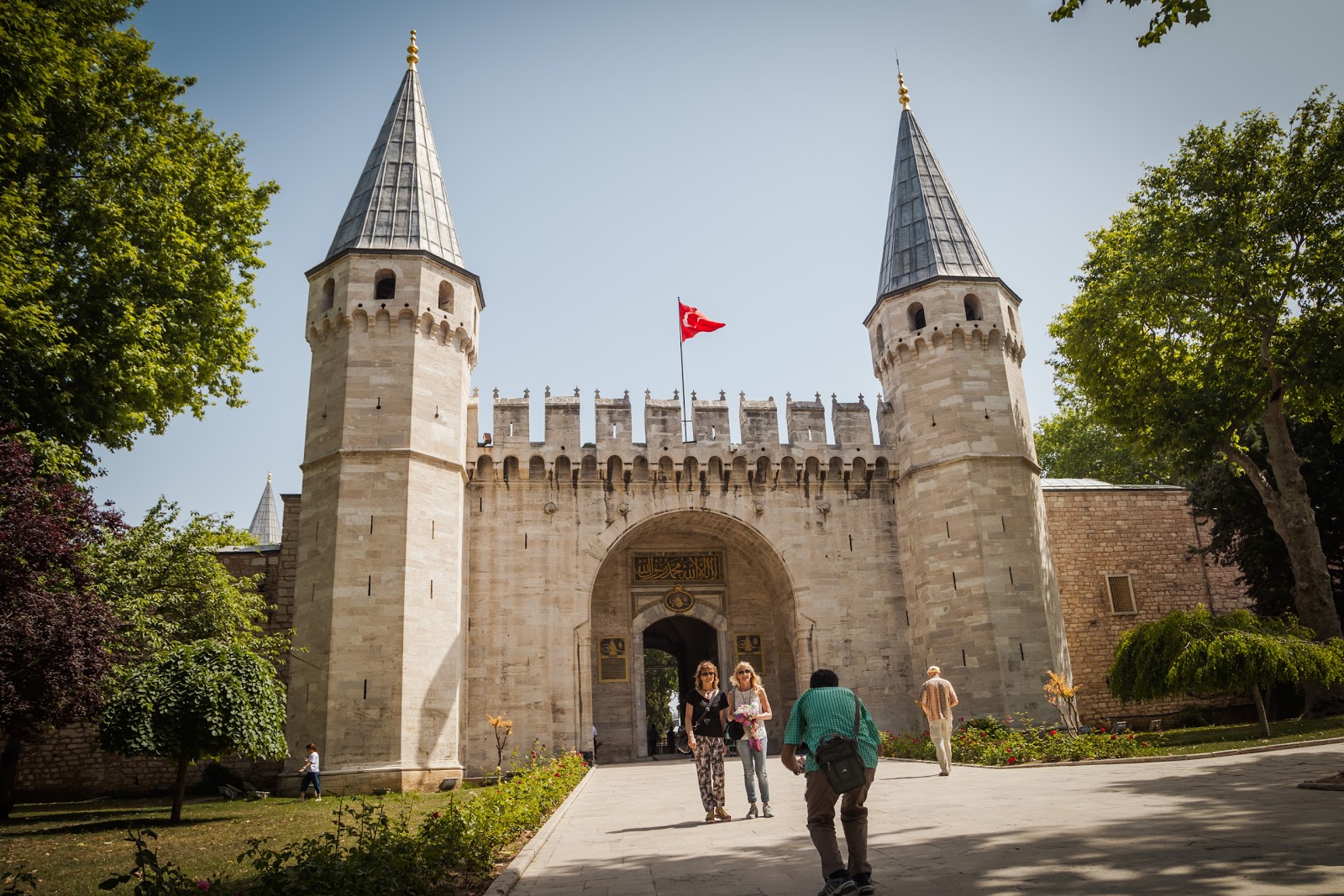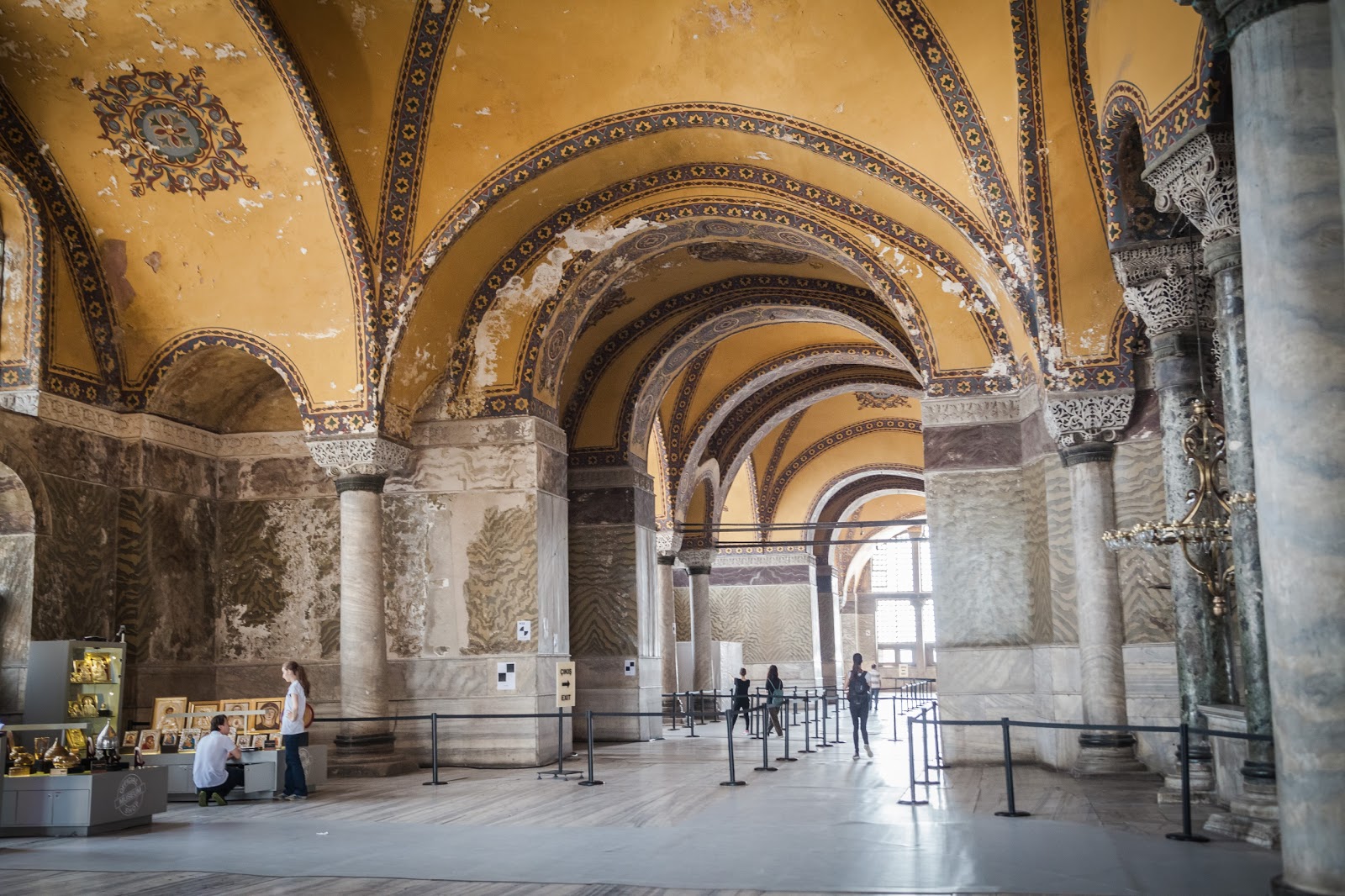ancient ruins
Asia
cities
Europe
history
Middle East
Turkey
7 Not To Be Missed Places in Istanbul
11/15/2016
I love Istanbul. It's a little bit chaotic, a bit overwhelming, a bit stinky, but it's always real, vibrant and timeless. Istanbul used to be an important milestone on the Silk Road connecting East and West, North and South, and many cultures that would not intersect otherwise. There has been no Silk Road for many years now, but you can still see, hear, breathe, taste and touch its influence. For me, Istanbul is one of those cities that I always want to come back to. As a matter of fact, it also has a historical significance for me as a Ukrainian, as Kyivan Rus brought up Christianity from here over a millennium ago. This article will guide you through the top 7 attractions in Istanbul that I handpicked for you.
1. Topkapi Palace.
You will appreciate the grandeur and luxury of the main residence for the Ottoman sultans called Topkapi Palace.
Nestled in the prime property of Istanbul for over 600 years, Topkapi Palace remains the world's largest and oldest surviving palace to this day.
As many as 300 concubines (i.e. wives) could live in the sultan's harem.
Not only was the Topkapi Palace a residence for a sultan, his family and servants, but also it was a main administrative, political and educational centre in the Ottoman Empire.
The kitchen staff of up to 1,000 people would prepare up to 6,000 meals a day.
There are 20 chimneys in the kitchen.
Topkapi Palace demonstrates some of the most beautiful examples of art (including architecture and landscaping) back in the day.
I found the interior to be rather modest if you compare it to palaces in Europe.
Blue and turquoise are the two dominant colours in the Ottoman culture.
Topkapi Palace overlooking the Bosphorus - the strait that connects the Black and Marmora Seas and separates Europe and Asia.
2. Hagia Sophia.
The greatest example of religious tolerance in the history of Istanbul is Hagia Sophia. It was built by the Romans as a church in the 6th century. When Istanbul (Constantinople) was conquered by Ottoman Turks in 1453, Sultan Mehmed II, who was Muslim, was so impressed with the grandeur and beauty of Hagia Sophia, that he decided to save and convert it to a mosque.
The architectural technique where each upper dome was reinforced by lower domes has proven to be successful, so the Ottoman Turks took it and used it to build their mosques. That's pretty much the reason why other mosques in Istanbul (including Sultan Ahmed or Blue Mosque) look so similar to Hagia Sophia.
Sultan Mehmed II and his successors-sultans over the next five centuries understood the value and cultural importance of the Hagia Sophia's frescoes and mosaics, so they helped save them by covering them with plaster and, later on, with gigantic circular-framed disks on many restorations.
The Hagia Sophia's frescoes and mosaics were hidden up until Mustafa Kemal Atatürk officially converted Hagia Sophia into a museum in 1935.
 |  |
Marble walls are amazing.
The view is worth taking pictures for sure.
3. Gulhane Park.
Translated from Turkish as a 'Rose House', Gulhane Park is the oldest and probably the most beautiful public park in Istanbul.
Located just outside of the Topkapi Palace and Hagia Sofia, Gulhane Park used to be a private grove for sultans, but in 1912 opened its doors to the public.
Shady Gulhane Park is a nice hideaway from the cruel summer sun.
4. Sultan Ahmed (Blue) Mosque.
This mosque goes by 'Blue' way more often than 'Sultan Ahmed' even though Turkish people have never called it 'Blue'. This name was given by foreign visitors because of its blueish interior.
A mosque was more than just a place for worship for the Ottoman Turks. Sultan Ahmed Mosque had a hospital, a primary school and a higher educational institution, a soup kitchen, a market (bazaar) and a tomb for the members of the royal Ottoman family.
Sultan Ahmed Mosque is facing Hagia Sofia across the main square. It seems like those who built it really wanted to prove that their artwork is no less significant than Hagia Sophia.
One of the ways to do so was to build six minarets because Hagia Sophia had only four ones. However, Sultan Ahmed I whom the mosque was built for, didn't take into account (or maybe he did, but still decided to do so) that the Grand Mosque in Mecca had only five minarets back then. So to avoid any allegations of disrespect, he commissioned one more minaret for the Grand Mosque in Mecca.
Everyone is welcome inside the mosque, but visitors have to obey some simple rules: women should cover their heads and legs, and men should wear pants (no shorts). Headcovers and skirts can be borrowed at the entrance.
The interior of the Sultan Ahmed Mosque is truly fascinating and definitely worth experiencing for all people no matter their religion.
Islam prohibits any depiction of human figures, but you'll find the greatest examples of Islamic ornaments and calligraphy.
Sitting on the carpet also brings a huge relief to your legs after a long walk in the city.
5. Basilica Cistern.
Basilica Cistern is literally the most hidden place in Istanbul because it's located underground.
55-step stairway takes you to the enormous rectangular water reservoir - 140 m / 459 ft in length, and 70 m / 229 ft in width.
Built by the Byzantine (Roman) Emperor Justinian in the 6th century, it's been in use for many centuries by Roman and then Ottoman rulers to store and supply potable water.
The cistern has 336 columns, most of them consisting of one whole part of marble.
Two Medusa heads, according to a myth, are believed to be taken from one of the three sisters-gorgones - the female monsters living underground. Medusa has the power to turn people who look at her into stones.
Basilica Cistern is by far the most mystical place in Istanbul and the best shelter from the summer heat.
6. Sirkeci Terminal.
Unlike other places in my top 7, Sirkeci Terminal has no religious background, but it definitely played a significant role in Turkish history. Sirkeci Terminal was the eastern terminus of the famous Orient Express which connected Paris with Istanbul from 1889 until 1977.
The terminal building that was designed by August Jasmund, a Prussian who was sent by the German government to study Ottoman architecture, is a great example of European Orientalism.
Unfortunately, there has been no more international train service from the Sirkeci Terminal since 2013. The last one was to Bulgaria, but it was suspended due to cheaper and faster transportation alternatives people often choose.
7. Suleymaniye Mosque.
Suleymaniye Mosque built on the order of Sultan Suleyman the Magnificent is probably the best masterpiece of Mimar Sinan, the Chief architect in the Ottoman Empire.
Suleymaniye Mosque is the second largest mosque in Istanbul (after the Sultan Ahmed or Blue Mosque).
The view from the mosque's yard is unbeatable.
My other posts from the Trip to Turkey











































































0 comments